Fort Worth is a vibrant and diverse city in the heart of Texas. As one of the major cities in the Dallas-Fort Worth Metroplex, Fort Worth has a rich history and a unique blend of Western heritage and modern urban amenities.
And as almost every large city in the country, it has its share of sister cities.
What Is a Sister City?
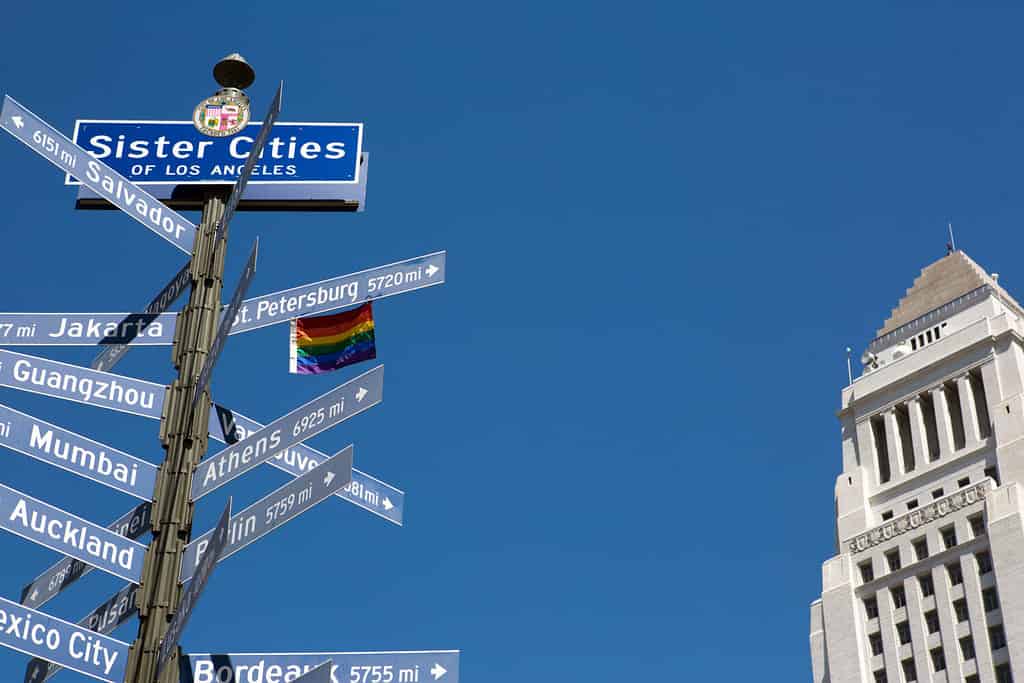
Fort Worth has nine sister cities.
©Yevgenia Gorbulsky/Shutterstock.com
A sister city is a relationship between two cities in different countries on the same or other continents. Those partnerships have multiple goals, including understanding different cultures, encouraging education exchanges, and promoting tourism. If needed, sister cities can also provide humanitarian help in emergencies or natural disasters.
The program began in the 20th century when President Dwight D. Eisenhower created the Sister Cities International Program in 1956. According to Sister Cities International, he envisioned a network that would promote peace and understanding by forming bonds with worldwide communities, especially after WWII.
Most of the sister cities’ partnerships are initiated through local organizations or the city mayors. Nowadays, 70 years after the program’s start, hundreds of U.S. cities participate in the Sister City program and connect with over 2,000 communities worldwide. Fort Worth, TX, has nine sister cities on four continents: Africa, Asia, Europe, and North America.
Reggio Emilia, Italy

This city is the birthplace of the Italian flag.
©Renata Sedmakova/Shutterstock.com
Reggio Emilia, Italy, is the oldest sister city of Fort Worth; their relationship was established in 1985. This partnership offers cultural exchanges, cooking, and Italian lessons. The program also developed unique first-ever exchanges. These include the Tricolore Youth Sports Games, a youth-based version of the Olympics for which Fort Worth is the sole United States participant. But also some wheelchair basketball tournaments.
The city of Reggio Emilia is in the Emilia-Romagna region of Northern Italy. Nestled in the heart of the Po Valley, Reggio Emilia is approximately 50 miles (70 kilometers) north of Bologna and 94 miles (150 kilometers) southeast of Milan.
Reggio Emilia has a really old history. The Etruscans founded it, and it later became a Roman settlement known as Regium Lepidi. It was ruled by various empires and dynasties throughout the centuries, including the Lombards, Franks, and the Papal States. In 1797, the city was the site of the “Cispadane Republic” creation, a short-lived revolutionary state that contributed to the unification of Italy in the 19th century.
Things to See and Do in Reggio Emilia
The Basilica della Ghiara, an ornate Baroque church with exquisite frescoes and a magnificent dome, is a must-visit in Reggio Emilio. Another site to visit is the Piazza Prampolini, an elegant square surrounded by historic buildings. Additionally, the city is home to well-preserved medieval architecture and charming streets.
Reggio Emilia is famous for its cultural heritage and contributions to art and music. It also has a strong tradition of promoting early childhood education. The famous Reggio Emilia approach is an innovative educational model used worldwide. The city is also known for its cultural institutions and events. These include the Teatro Municipale, which hosts operas and concerts, and various museums celebrating its history and art.
Nagaoka, Japan
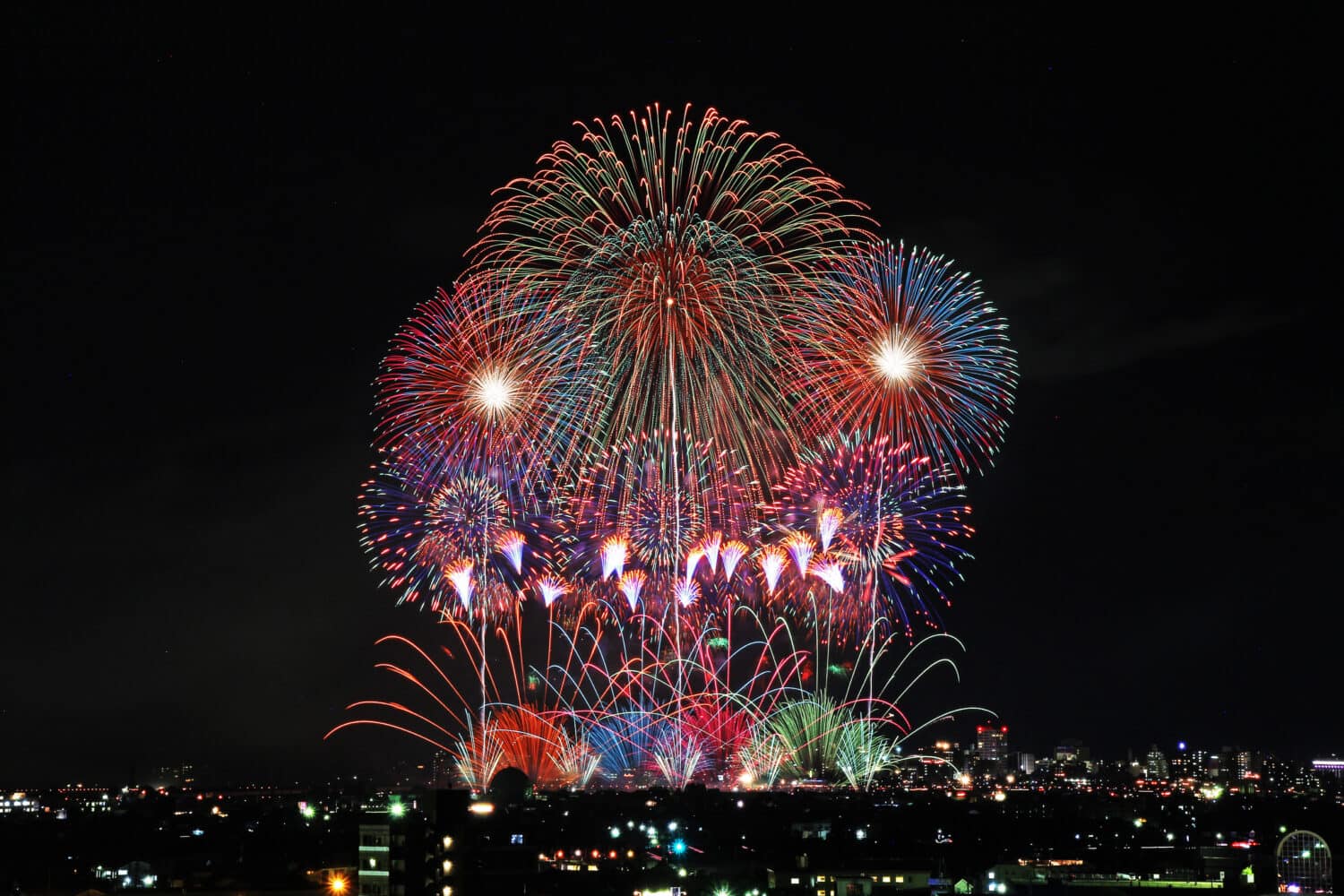
Nagaoka is Japan’s firework capital.
©KUNIHIRO OUJI/Shutterstock.com
The partnership between Fort Worth, TX, and Nagaoka, Japan, happened in 1987. This is Fort Worth’s most active program. Each year, over 200 youth and adults exchange for sports, culture, and education programs. Nagaoka, Japan’s firework capital, annually gifts a firework for Fort Worth’s celebration as an All-America City.
Nagaoka, in Niigata Prefecture, Japan, has a rich history and vibrant culture. In the Chūetsu region on the island of Honshu, Nagaoka is nestled amidst picturesque landscapes, including the Sea of Japan to the west and the Echigo Mountains to the east.
During World War II, the city was heavily bombed, resulting in widespread destruction. However, in the post-war era, Nagaoka slowly rebuilt itself. Annually, the city celebrates its rebirth during the Nagaoka Fireworks Festival, one of Japan’s most renowned fireworks displays. The festival, held in August, attracts thousands of visitors.
Things to See and Do in Nagaoka
In Nagaoka, the most famous attraction is the Yasuragitei. This historic site offers visitors a glimpse into the city’s past, with well-preserved samurai residences and beautiful gardens. Another landmark is the Kome Hyappyo Museum. It features insight into the region’s rice production and its significance in Japanese culture.
The culture of Nagaoka reflects a blend of traditional Japanese customs and contemporary influences. Visitors can immerse themselves in local traditions, such as tea ceremonies and ikebana (flower arranging). They can also explore the city’s thriving arts scene, including galleries and theaters showcasing classical and modern performances.
Trier, Germany

Trier is the capital of the Rhineland-Palatinate state.
©Romas_Photo/Shutterstock.com
The same year, in 1987, Fort Worth, TX, and Trier, Germany became sister cities. Thanks to joint efforts, many student exchanges happened between the two cities. This also includes an annual student exchange and an active intern program. It also features hunting expeditions in the mountains of Germany and the plains of Texas.
Often called the “oldest city in Germany,” Trier is a historic gem. Nestled in the western part of the country, near the borders of Luxembourg and France, it has a strategic location along the banks of the Moselle River.
The history of Trier dates back over two millennia, making it one of the oldest continuously inhabited cities in Europe. Founded by the Celts in the late 4th century BC, it later became a Roman colony known as “Augusta Treverorum” during the reign of Emperor Augustus. Trier served as the capital of the Western Roman Empire. Today, the city boasts a wealth of well-preserved Roman structures.
Things to See and Do in Trier
Trier’s location in the Moselle Valley makes it an excellent base to explore the surrounding vineyards and wineries, which produce some of the finest wines in Germany. The city is a perfect spot for wine enthusiasts.
Trier’s cultural heritage extends beyond its Roman roots. The city has a rich medieval history, with narrow streets, half-timbered houses, and Gothic and Romanesque architecture. The Trier Cathedral, or Dom St. Peter, is a stunning example of this architectural blend as it features elements from various historical periods. It is also home to the Holy Tunic, believed to be the seamless robe of Jesus Christ.
The city of Trier is also known for its vibrant cultural scene. The city hosts numerous festivals and events annually, celebrating its history and embracing contemporary arts. The Karl Marx House, where the famous philosopher and economist Karl Marx was born, is now a museum that offers insights into his life and ideas.
Bandung, Indonesia
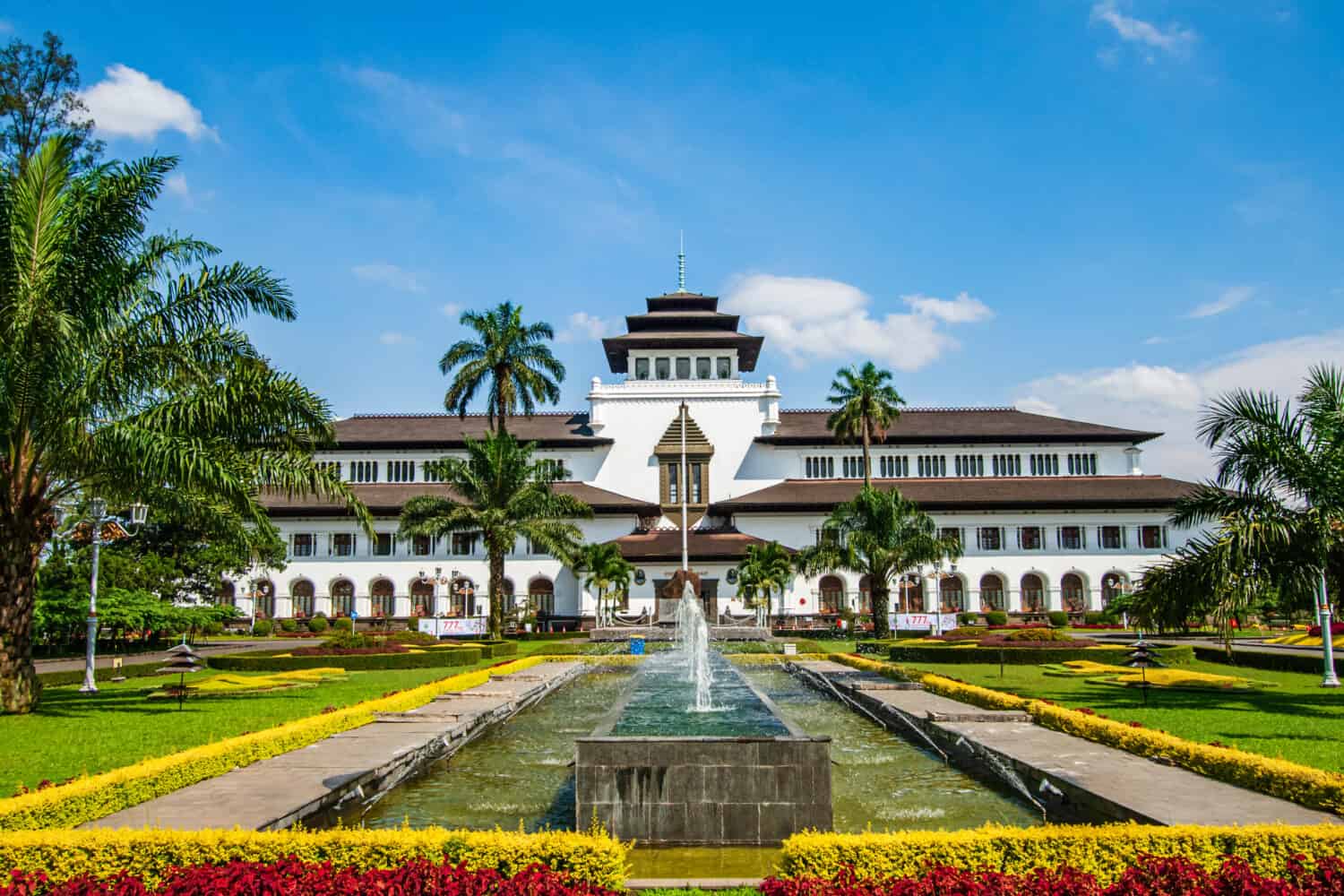
Bandung is Indonesia’s fourth-largest city by population.
©Abah Baratawiria/Shutterstock.com
Fort Worth, TX, and Bandung, Indonesia, started their partnership in 1990. This partnership was the first between a U.S. and an Indonesian city. The Fort Worth-Bandung partnership works to create economic, sports, and cultural exchanges.
Bandung, also known as the “Paris of Java,” is a culturally rich city in West Java, Indonesia. Nestled amidst the lush volcanic mountains and fertile valleys of Java, Bandung is the capital of West Java Province. The city holds a prominent place in Indonesia’s cultural, historical, and economic landscape.
Situated approximately 87 miles (140 kilometers) southeast of the Indonesian capital, Jakarta, Bandung boasts an altitude of around 2,520 feet (768 meters) above sea level. This elevation gives the city a cooler and more pleasant climate than many other Indonesian cities.
Bandung’s history goes back to the colonial era. The Dutch established the city as a hill station during the 18th century. It was strategically chosen as a place for the Dutch elite to escape the heat of Jakarta and enjoy the refreshing climate. The city then grew and flourished, becoming an essential hub for trade and commerce.
Things to See and Do in Bandung
Nature enthusiasts can explore the Tangkuban Perahu volcano just outside the city. For tea enthusiasts, the Ciwidey tea plantation is a must-visit. Tours are available to visit the lush tea fields and learn about the tea-making process.
Bandung itself is full of attractions. The Gedung Sate, a colonial-era government building famous for its unique architectural style and the satay-shaped ornament on its rooftop, is a must-see. It now houses the West Java Governor’s Office. For those interested in history and culture, the Asia Africa Museum and the Bandung Geology Museum are excellent places to explore the region’s past.
Bandung’s culture is a beautiful mix of diverse ethnic groups, including Sundanese, Javanese, and Chinese. The Sundanese culture, in particular, has a strong presence in Bandung, influencing everything from traditional music and dance to cuisine.
The city is also home to a thriving arts scene, with numerous galleries, theaters, and creative spaces. In Bandung, the bustling streets of Jalan Braga have numerous boutiques, cafe markets, and vintage shops.
Budapest, Hungary

The Hungarian Parliament is one of the most stunning buildings in Europe.
©R.M. Nunes/iStock via Getty Images
Fort Worth, TX, and Budapest, Hungary, became sister cities in 1990. Fort Worth was the first U.S. city to link with Hungary. The partnership offers education and sports exchanges like the Cliburn Piano Institute-Franz Liszt Academy Scholar exchanges. Texas Christian University (TCU) also has many exchange students in Budapest.
Budapest, also nicknamed the “Pearl of the Danube,” is a stunning city in Central Europe and the capital of Hungary. Located along the banks of the Danube River, the river splits the city into two distinct parts: Buda and Pest, each with unique charm and character.
Settlements in the area are centuries old, but Budapest as we know it today was officially established in 1873. This happened when the separate towns of Buda, Pest, and Óbuda (Old Buda) merged into one city. Over the centuries, Budapest has been ruled by various empires and dynasties, including the Romans, Ottomans, and Habsburgs.
Things to See and Do in Budapest
Budapest’s most iconic and famous attraction is the Hungarian Parliament Building. This architectural masterpiece along the banks of the Danube River is the landmark to absolutely visit, especially when illuminated at night.
Another landmark worth a stop is the Buda Castle, atop Castle Hill on the Buda side of the city. With its centuries-old history and stunning architecture, this majestic fortress offers panoramic views of the Danube and the Pest side.
Budapest’s thermal baths, such as Széchenyi and Gellért Baths, are world-famous. They provide a relaxing way to experience the city’s spa culture. The city also boasts the Chain Bridge, Fisherman’s Bastion, Matthias Church, and Heroes’ Square.
The city is famous for its classical music heritage, with the Budapest Opera House and the Liszt Academy of Music producing some of the world’s greatest composers and musicians. Visitors can (and should!) try Hungarian cuisine. It includes dishes like goulash, paprika chicken, and chimney cake (kürtőskalács), offering a delicious taste of local flavors.
Toluca, Mexico
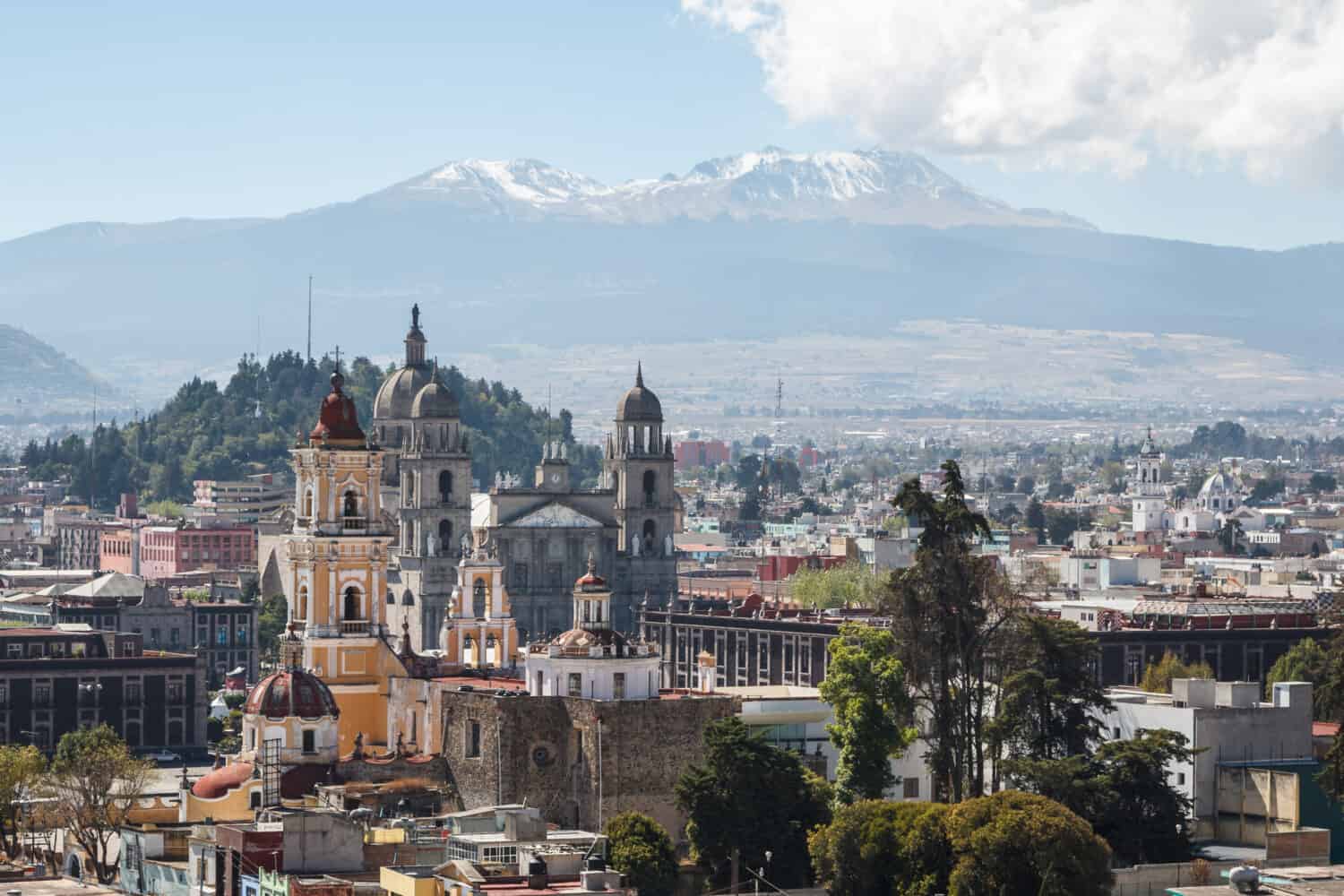
The city of Toluca is the capital of the State of Mexico.
©Lev Levin/Shutterstock.com
In 1998, Toluca, Mexico, and Fort Worth, TX, started their partnership. Both cities have a large amount of programs. These include culture, language, mentoring programs, and a medical school intern program.
Toluca is a historically rich city in the State of Mexico, in central Mexico. Nestled within the Toluca Valley, it is approximately 39 miles (63 kilometers) west of Mexico City. The city is within easy reach of the bustling capital, making it an important regional economic and cultural center.
The history of Toluca dates back to pre-Hispanic times when it was inhabited by the Matlatzinca people, who called it “Tollocan.” After the Spanish conquest in the 16th century, Toluca underwent a significant transformation. It also played a vital role during the Mexican War of Independence in the early 19th century.
Things to See and Do in Toluca
The Cosmovitral Botanical Garden is a stunning glass-walled greenhouse adorned with impressive stained glass murals created by famous artist Leopoldo Flores. These murals depict themes related to the cosmos.
Toluca’s historic downtown is home to cobblestone streets with well-preserved colonial architecture. Visitors can also explore churches like the Cathedral of Toluca and enjoy local markets and shops. The city’s central square, known as the Zócalo, is a hub of activity where locals gather and cultural events often occur.
Toluca boasts a rich and diverse culture influenced by its indigenous heritage and centuries of Spanish colonization. Yearly, colorful festivals and cultural events celebrate traditional Matlatzinca and Mexican folklore. Toluca is also known for its distinct cuisine, with local dishes like “chorizo verde” (green sausage) and “mole” being popular among locals and visitors.
Mbabane, Eswatini
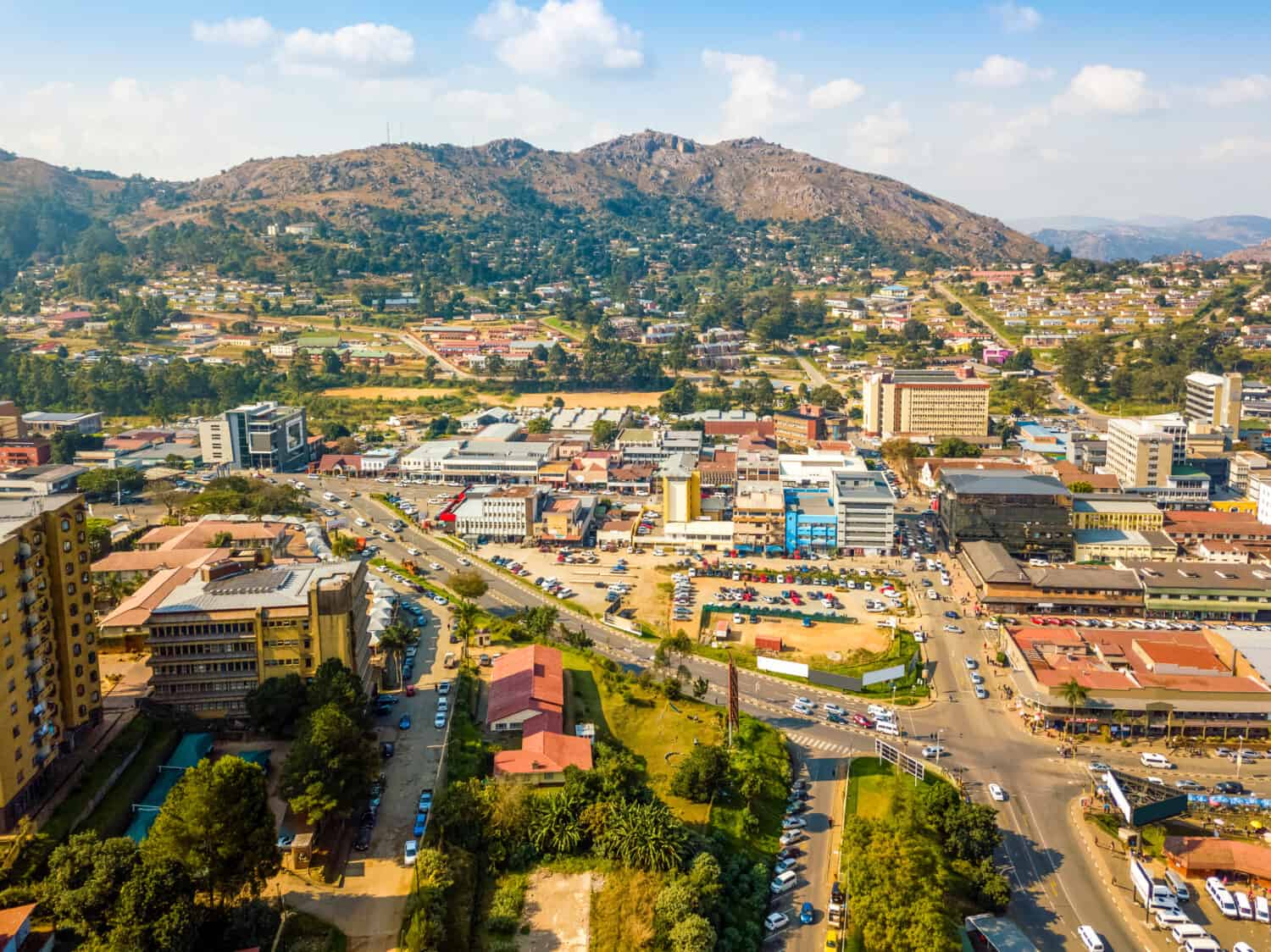
Eswatini shares its eastern border with Mozambique.
©Sopotnicki/Shutterstock.com
The partnership between Mbabane, Eswatini, and Fort Worth, TX, came in 2004. The annual exchange programs include youth exchanges, adult service projects, and various humanitarian-focused projects.
Mbabane is the capital city of Eswatini (formerly Swaziland), a landlocked country within South Africa. Nestled in the picturesque Mdimba Mountains, Mbabane is in the western part of Eswatini, close to the border with South Africa. This city serves as the administrative and economic hub of the nation.
Mbabane’s history dates back to the early 20th century when it became the capital of the British Protectorate of Swaziland. It then grew into a thriving city while retaining its cultural heritage. The name “Mbabane” comes from the Mbabane River, which flows through the city and contributes to its lush, green surroundings.
Things to See and Do in Mbabane
Mbabane’s strategic location amid the scenic mountains makes it a gateway to outdoor adventures. These include hiking, birdwatching, and exploring the countryside.
Outside the city, the Mlilwane Wildlife Sanctuary offers a chance to explore Eswatini’s natural beauty and wildlife. The sanctuary is home to various species of animals, a perfect destination for nature enthusiasts.
In downtown Mbabane, the Swazi Market is a great spot for visitors to explore. This bustling hub gathers locals and tourists as they shop for traditional crafts, clothing, and fresh produce. Visitors to the city can experience the warmth and hospitality of the Swazi people. Traditional dance and music performances are common, providing a glimpse into the local customs and traditions.
Guiyang, China

With its green surroundings, Guiyang earned the nickname “Forest City.”
©4045/Shutterstock.com
Both cities started their partnership in 2010, allowing multiple cultural exchanges. Guiyang, nestled amidst lush green hills, is the capital city of Guizhou Province in southwestern China.
Historically, Guiyang has a significant past dating back over two thousand years. It served as an important center for trade and culture in the region. Its strategic location along the historic Southwestern Silk Road contributed to its growth and influence over the centuries. The city has witnessed the rise and fall of various dynasties and played a role in developing Chinese culture and commerce.
Things to See and Do in Guiyang
Guiyang is famous for its natural beauty. Picturesque karst landscapes, lush mountains, and serene lakes surround the city. Specifically, the Tianhetan Scenic Area offers breathtaking karst formations, waterfalls, and caves for nature enthusiasts to explore. Another site to explore is Qianling Park, a peaceful urban oasis with scenic viewpoints, walking trails, and a serene lake.
A must-visit in Guiyang is Qingyan Ancient Town. This well-preserved ancient town dates back to the Ming Dynasty. It is characterized by its traditional architecture, cobblestone streets, and old city walls. Visitors can stroll through the town’s narrow lanes and visit ancient temples.
The city is a melting pot of cultures, with a notable population of Miao and Buyi ethnic minorities. This cultural diversity is reflected in Guiyang’s festivals, cuisine, and arts. Visitors to Guiyang can immerse themselves in the local culture by attending traditional Miao and Buyi festivals, sampling regional delicacies, and exploring the colorful handicrafts created by the indigenous communities.
Nîmes, France
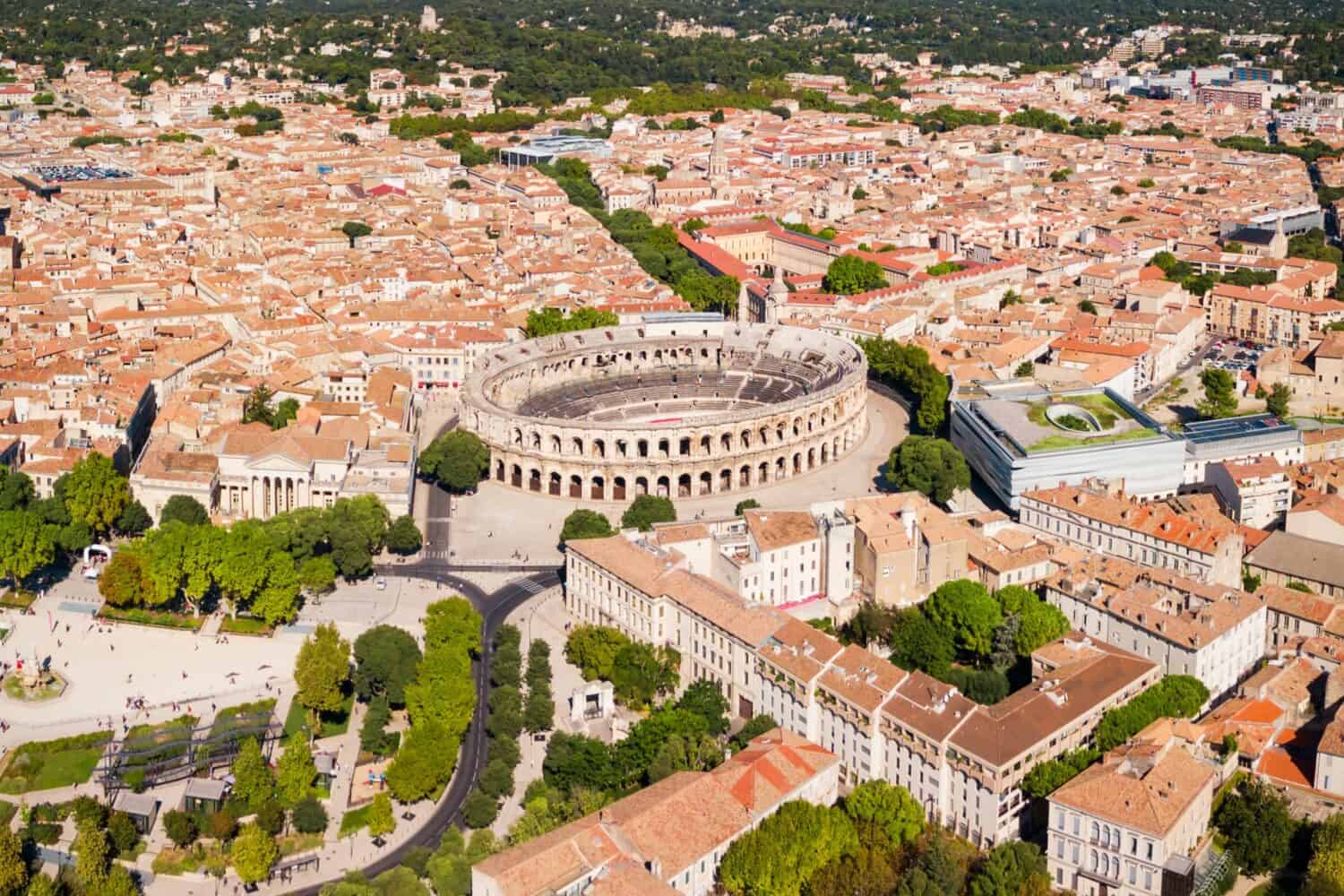
The city of nîmes is one of the hottest cities in France.
©saiko3p/Shutterstock.com
The city of Nîmes is Fort Worth’s most recent sister city in 2019. Even with the COVID-19 pandemic, both cities have already organized annual youth, university, and adult exchanges. It also features culinary exchanges for students and adults.
Nîmes is a city with a rich Roman history in the southern region of France, in the Occitanie region. Nestled in the Languedoc-Roussillon region, Nîmes enjoys a strategic location between the Mediterranean Sea and the Cévennes mountains.
The history of Nîmes is a mix of Roman influence and French heritage. Originally known as “Nemausus,” the city was founded by the Romans in the 1st century BC. It became a crucial Roman outpost and thrived during the Roman Empire. After the fall of the Roman Empire, Nîmes, like much of Europe, experienced a decline.
Nîmes experienced a revival in the 18th century when it became a hub for textile manufacturing, particularly denim fabric. “Denim” is believed to be derived from “de Nîmes,” indicating the city’s association with this durable material. It later became an essential hub for wine production and agricultural activities.
Things to See and Do in Nîmes
The city boasts an impressive Roman heritage. A stunning landmark is the Arena of Nîmes. This remarkably preserved Roman amphitheater was built around 70 AD and once hosted gladiatorial contests and chariot races. The Maison Carrée, a well-preserved Roman temple, transports visitors into the glory days of the Roman Empire.
The Jardins de la Fontaine, a beautifully landscaped park featuring ancient Roman ruins and water features, provides a tranquil escape from the urban bustle. The Pont du Gard, a UNESCO World Heritage Site just a short drive away, is a majestic Roman aqueduct that spans the Gardon River.
The city celebrates its past through festivals like the Féria de Nîmes, a lively event showcasing bullfighting, music, and dance, reflecting the enduring Spanish influence in the region.
The photo featured at the top of this post is © Barbara Smyers/Shutterstock.com
Thank you for reading! Have some feedback for us? Contact the AZ Animals editorial team.







